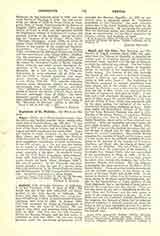

Argyll and the Isles, the Diocese of. —The Diocese of Argyll, founded about 1200, was separated from the Diocese of Dunkeld; it included the western part of Dunkeld, beyond the Drumalban mountain range, together with the Isle of Lismore, in which the cathedral was erected. The first bishop was Harold, chaplain of the Bishop of Dunkeld, chosen on account of his acquaintance with the Gaelic tongue. The Diocese of the Isles included the islands off the west coast of Scotland, formerly subject to Norway, and annexed to the Scottish Crown in 1206 under James I. The Archbishop of Drontheim continued to exercise jurisdiction over these islands, but in the middle of the fourteenth century the Hebrides were ecclesiastically separated from the Isle of Man, which was subjected to the province of Canterbury (and later to York). A century and a half afterwards Alexander VI, at the request of King James IV, united the See of the Isles and the abbacy of Iona, which were henceforth held by the same person, the cathedral of the newly-constituted diocese being established at Iona. There were thirty pre-Reformation Bishops of the Isles, the last being Roderick Maclean, who died in 1553. The last of the sixteen Bishops of Argyll was William Cunningham, who died in 1552; for his successor, James Hamilton, seems never to have received consecration. Both sees thereafter remained vacant for over three hundred years, until March 4, 1878, Leo XIII reerected the Scottish hierarchy, the united diocese of Argyll and the Isles being included among the revived bishoprics. The present diocese comprises the counties of Argyll and Inverness, south of a line drawn from the northern extremity of Loch Luing to the junction of the counties of Inverness, Aberdeen, and Banff; also the islands of Arran and Bute, and the Hebrides. The actual Bishop (1906), the second since the restoration of the hierarchy, is the Right Rev. George Smith, who was consecrated in his procathedral at Oban, in 1893. In his extensive diocese there are only twenty-three priests on active duty, twenty-two missions, and forty-five churches, chapels, and stations. The only religious communities are three convents of the Sisters of the Sacred Hearts. There are seven Catholic day-schools, and the Catholic population of the diocese is estimated at between 12,000 and 13,000 souls. It has tended to diminish rather than to increase in recent times, owing to the drain caused by emigration, and also to the depopulation of many districts of the West Highlands, due to the turning of large tracts of land by the proprietors into deer forests. There are but two towns of any size or importance in the diocese, Oban and Rothesay; and the only access to many of the outlying missions is by sea. By a singular contrast, the wealthiest Catholic landowner in the kingdom, the Marquis of Bute, has his principal place of residence (a palatial mansion on which his father is said to have expended upwards of a million sterling), in what is probably the poorest diocese in the British Isles.
D. O. HUNTER-BLAIR

